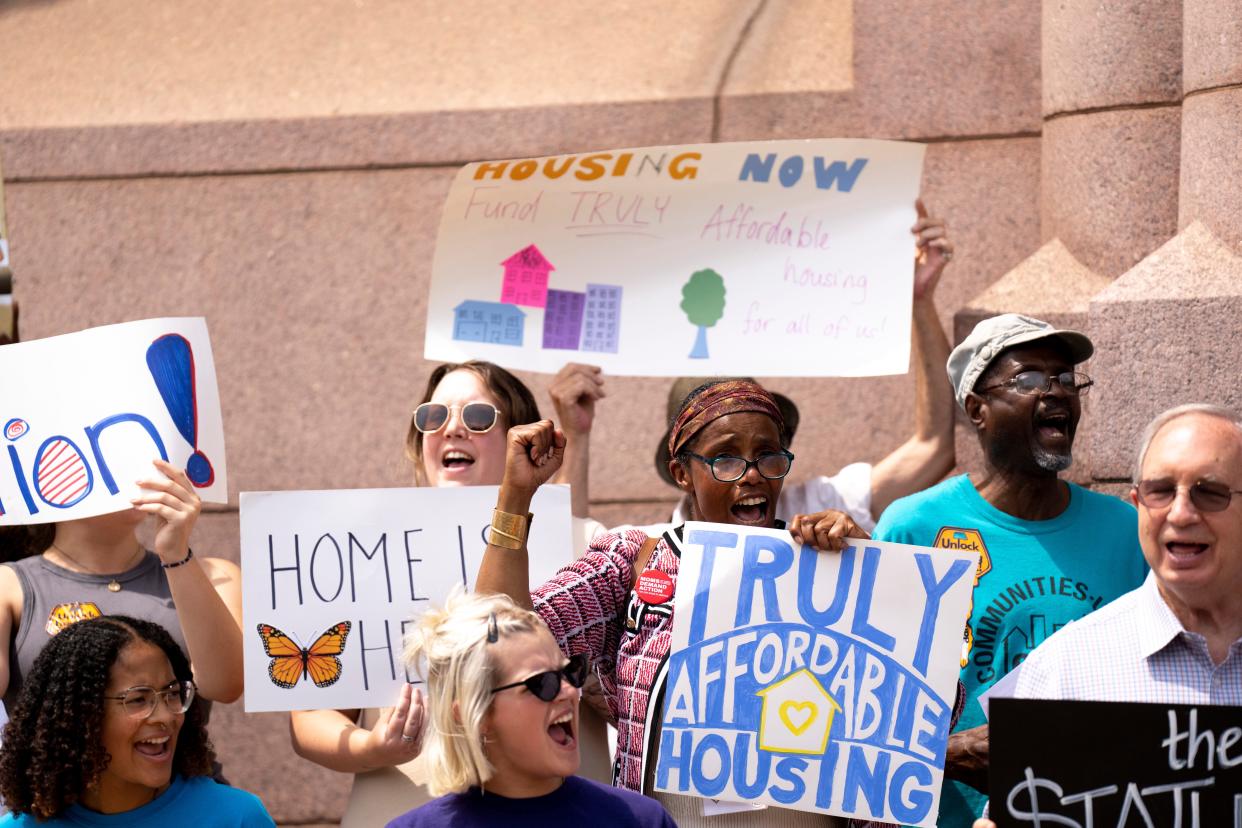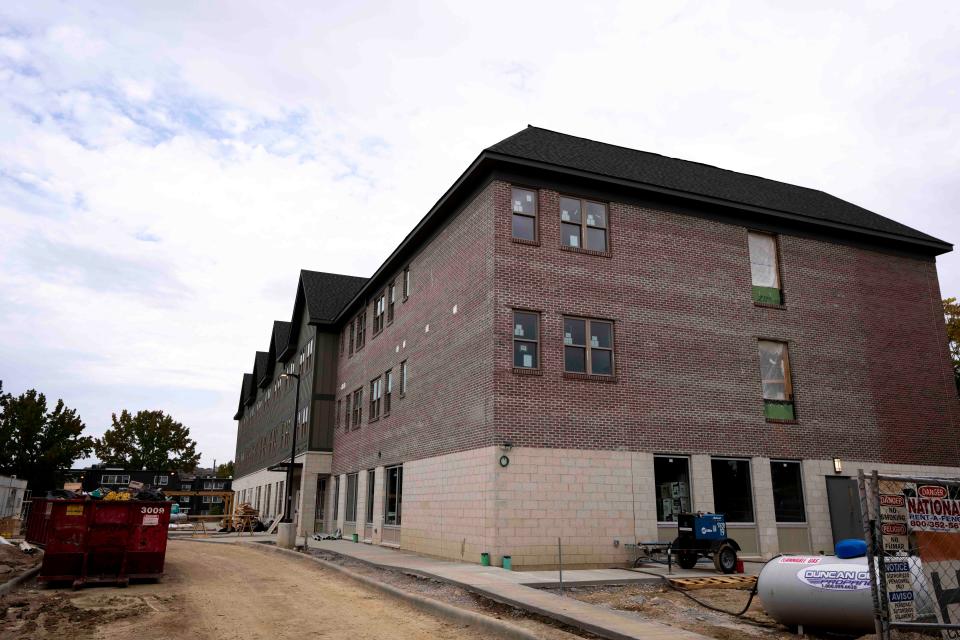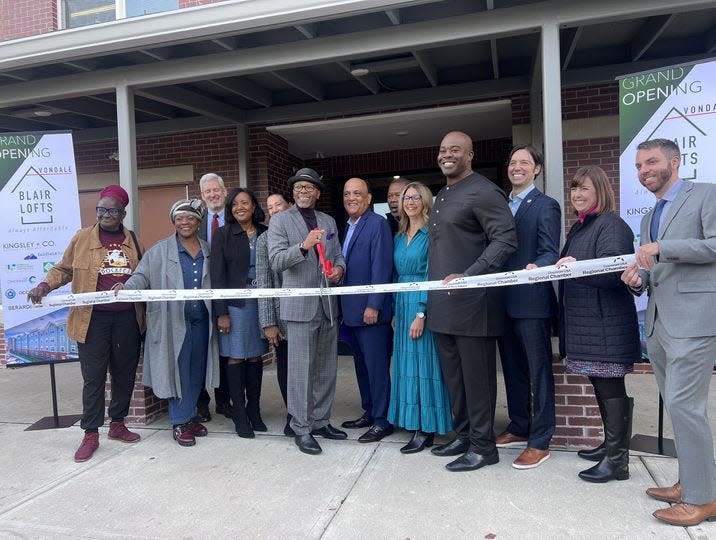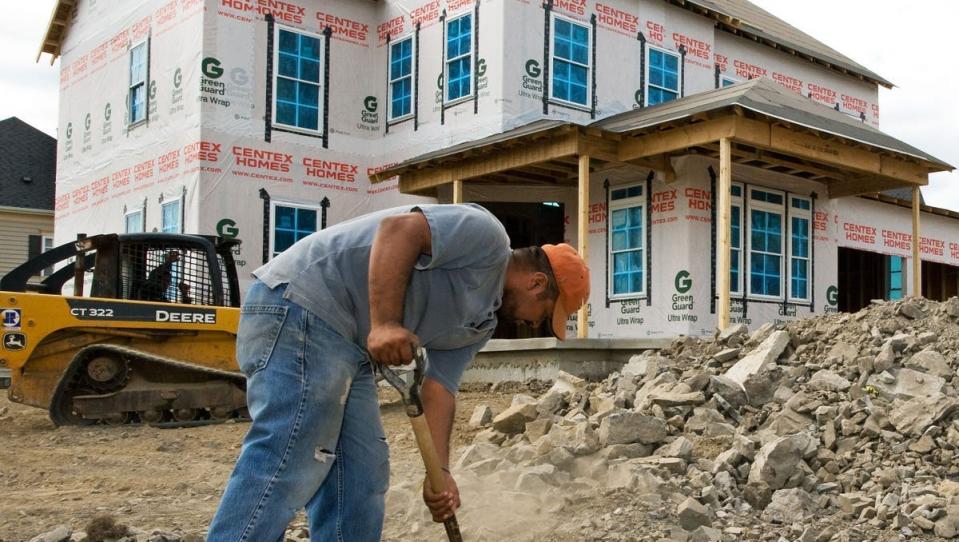Facing a lack of affordable housing, voters in one Ohio city may take action Tuesday

This story has been updated to show a complete breakdown of how the money raised by Issue 24 would be spent.
The poorest renters face a housing shortage in every state and major metropolitan area with the National Low Income Housing Coalition estimating a shortage of 7.3 million units nationwide.
In Cincinnati, a group of affordable housing advocates think they have an answer: asking voters to raise taxes on themselves to pay for affordable housing.
Issue 24, which was added to Tuesday's ballot through a signature-gathering campaign led by Cincinnati Action for Housing Now, would raise the city's earned income tax from 1.8% to 2.1%, generating up to $50 million a year to build and maintain affordable housing specifically for the area's lowest-income residents.
It's a novel approach to a complex issue but will require buy-in from voters already shouldering a higher cost of living, including high gas prices, high food costs and 20-year high mortgage rates.
Still, it's not unheard of for voters to increase taxes on themselves to fund affordable housing.
'Something has to be done'
Voters in San Jose, California, approved an increase in their property transfer tax for affordable housing and more homeless shelters in March 2020 before the pandemic was declared. The property tax transfer measure, known as Measure E, passed with more than 53% of the vote.
Since its passage, Measure E has led San Jose's city council to pledge funds to create more than 300 "deeply affordable apartments," assist 80 unhoused students and keep more than 1,000 families in their homes, according to a report early this year in the San Jose Spotlight.
"In recent years, many communities have seen an increase in homelessness because of a lack of affordable housing. That's raised public awareness of the housing challenges we all have. Communities have seen this and said, 'Something has to be done,'" said Andrew Aurand, senior vice president for research at the National Low Income Housing Coalition.
The housing coalition's annual "The Gap" report found that no state has an adequate supply of housing for households with extremely low incomes, and there are just 33 affordable units available for every 100 renter households with extremely low incomes nationwide.
The housing coalition defined households with extremely low incomes as those with incomes at or below either the federal poverty line, or 30% of their area median income, whichever is greater.
How the Cincinnati plan would work
Issue 24 would cater to essentially the same group, raising money almost exclusively for households with annual incomes at or below 30% of the area median income for a family of four in the Cincinnati metro area, or about $30,000 a year, according to the U. S. Department of Housing and Urban Development.
At least 65% of the funds raised by Issue 24 would go toward developing and maintaining housing for families earning 30% or less of the median income for the Cincinnati metro area.
Up to 30% of the money could be used to develop and maintain housing for people earning up to 50% of the area median income, or $50,550 for a family of four, according to HUD.
Up to 5% of the money would go toward administrative costs and oversight of affordable housing projects.
Issue 24 would expand Cincinnati's already existing Affordable Housing Leverage Fund, which had raised about $112 million in public and private funds through October and is managed by the Cincinnati Development Fund, a nonprofit lending institution created by Cincinnati-area financial institutions in 1988.
In the 12 months that ended in August, the affordable housing fund had committed $31 million to build or preserve 857 income-restricted units in developments in Cincinnati.

Projects receiving funding included Slater Hall in Cincinnati's West End neighborhood, and Paramount Launch and Peebles Apartments in the city's Walnut Hills neighborhood.
However, the vast majority (84%) of the affordable housing units created or under construction are for families earning anywhere from 31%-80% of the area median income.
Rented before the sign went up
Issue 24 would raise more money for households below those thresholds.
The gap between the supply and demand for affordable rental housing for extremely low-income households in Cincinnati is about 28,000 units, according to a 2017 report from Xavier University's Community Building Institute.
"I'm well aware of the need," said Chinedum Ndukwe, whose construction firm, Kingsley + Co., recently completed the first phase of the Blair Lofts Apartments in Avondale. "We didn't even put a (For Rent) sign out on the building, and it was 100% percent leased before our grand opening. We have a waiting list for Phase II."

The first phase of the project at the corner of Reading Road and Blair Avenue is a 60-unit building with one-, two- and three-bedroom apartments affordable to households earning between 30% and 60% of the area median income for Cincinnati.
Ndukwe said he and other developers would likely build more affordable housing if there were more money available to help reduce the amount they need to borrow for construction and minimize their operating costs.
That's because affordable projects that receive government subsidies can’t simply pass their costs down to renters whose restricted rents are too low to cover the full costs of owning and managing a rental property.
Issue 24 could help fill in the financing gap, Ndukwe said.
'A ton of money' not being used
Ultimately, it will be up to developers and builders to take the lead and leverage funds for affordable housing construction and maintenance for extremely low-income residents.
David Stroup, chairman of the board of directors of the Homebuilders Association of Greater Cincinnati, which opposes Issue 24, doubts there would be a big increase in affordable housing construction if the ballot measure passes.
"There's a ton of money sitting there already that's not being used," said Stroup, referring to the millions of dollars in unappropriated funds in the Affordable Housing Leverage Fund that haven't been applied for.
The biggest impact of raising taxes to pay for affordable housing would be the financial burden on homebuyers in the form of a new tax on their income, Stroup said. That could further dampen demand for market-rate housing, which most builders and developers rely on for the lion's share of their profits.

In addition, he said, high labor and material costs, restrictive zoning laws for high-density affordable housing and the costs of navigating government "red tape" all combine to make building affordable housing cost prohibitive, especially at the lower end of the spectrum.
“Nobody’s building for free," Stroup said.
This article originally appeared on Cincinnati Enquirer: Affordable housing: Cincinnati voters may raise taxes to help poorest

